Below you may find a table of our current inventory. Please note that coins are in varying condition and some are graded. Therefore, if you are interested in a specific coin, please email us directly. Our inventory is constantly changing, and coins in stock may vary in condition from week to week. If you are looking to purchase specific coins or to sell coins, please contact us via email.
American Coins |
|
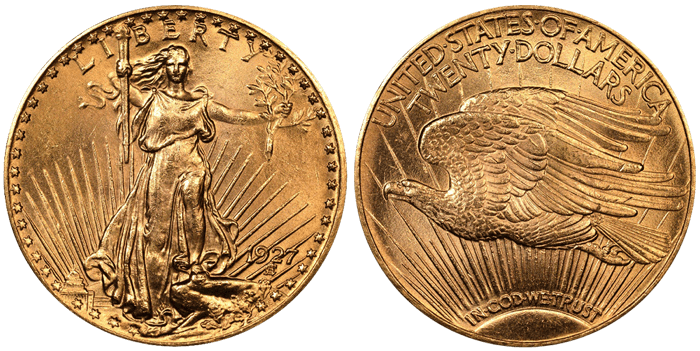 |
The American St. Gauden gold coin, also known as the Double Eagle, was minted by the United States Mint from 1907 to 1933. It features a stunning design by Augustus Saint-Gaudens, a renowned sculptor, which depicts Lady Liberty holding a torch and an olive branch while walking towards the viewer. The reverse side shows a majestic eagle in flight. The coin is made of 90% gold and 10% copper, with a weight of 33.43 grams and a diameter of 34 mm. It was widely used in commerce and international trade until it was withdrawn from circulation in 1933 due to President Roosevelt's Gold Reserve Act. Today, the St. Gauden gold coin is highly sought after by collectors and investors for its historical significance and intrinsic value. |
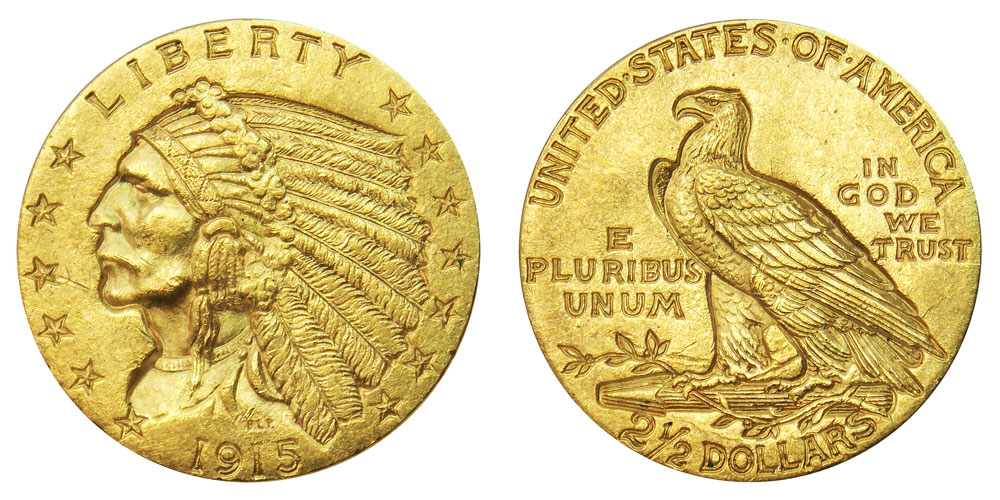 |
The American Indian Head gold coin, also known as the $5 Indian, was minted by the United States Mint from 1908 to 1929. It was designed by sculptor Bela Lyon Pratt, who incorporated a unique incuse or sunken relief design, where the images are pressed into the surface of the coin rather than raised above it. The obverse side features a profile of a Native American chief wearing a feathered headdress, while the reverse side depicts a majestic eagle standing on an olive branch with the inscriptions "E PLURIBUS UNUM" and "IN GOD WE TRUST." The coin was made of 90% gold and 10% copper, with a weight of 8.36 grams and a diameter of 21.6 mm. It was widely used in commerce and banking, but production stopped due to the Great Depression. Today, the American Indian Head gold coin is highly prized by collectors and investors for its unique design and historical significance. |
 |
American Silver Dollar coins have a rich history dating back to the late 18th century. The most famous of these coins is the Morgan Silver Dollar, named after its designer, George T. Morgan. It was minted from 1878 to 1904, and again in 1921, and features Lady Liberty on the obverse side and a majestic eagle on the reverse side. Another popular silver dollar is the Peace Silver Dollar, minted from 1921 to 1935, which features Lady Liberty on the obverse side and a perched eagle on a branch on the reverse side. These coins are made of 90% silver and 10% copper, with a weight of 26.73 grams and a diameter of 38.1 mm. Throughout history, American Silver Dollar coins were widely used in commerce and banking, and they continue to be highly sought after by collectors and investors for their beauty, historical significance, and intrinsic value. |
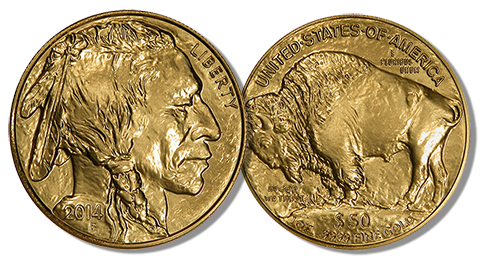 |
The American Buffalo gold coin, also known as the gold buffalo, is a relatively new addition to the United States Mint's collection of precious metal coins. It was first minted in 2006 and was the first .9999 fine 24-karat gold coin produced by the U.S. Mint. The coin's design is based on the classic Buffalo nickel, with an image of a Native American on the obverse side and a magnificent American bison on the reverse side. The coin is made of 99.99% pure gold and has a weight of 31.103 grams and a diameter of 32.7 mm. The American Buffalo gold coin is highly prized by collectors and investors for its high purity and exquisite design. It is also the only U.S. gold coin with a denomination of $50, making it a valuable addition to any investment portfolio. |
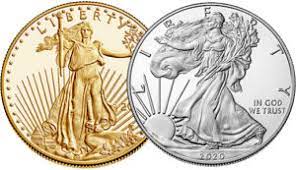 |
American Eagle gold and silver coins are a classic and highly prized addition to any coin collection. The American Eagle gold coin was first minted in 1986 and features a design by Augustus Saint-Gaudens, which is widely considered to be one of the most beautiful coin designs in history. The coin features Lady Liberty on the obverse side and an eagle in flight on the reverse side. The gold coin is made of 22-carat gold, with a weight of one ounce and a diameter of 32.7 mm. The American Eagle silver coin was first minted in 1986 and features a design by Adolph A. Weinman, which originally appeared on the Walking Liberty half dollar. The coin features Lady Liberty on the obverse side and a heraldic eagle on the reverse side. The silver coin is made of .999 fine silver, with a weight of one ounce and a diameter of 40.6 mm. Both the gold and silver coins are produced annually by the United States Mint and are highly valued by collectors and investors for their beauty, historic significance, and intrinsic value as precious metal bullion. |
Ancient Coins |
|
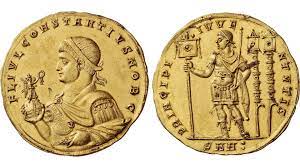 |
Ancient Roman coins are highly valued by collectors and historians as they offer a unique insight into the political, social, and economic history of the Roman Empire. The Roman Republic began minting coins in the 4th century BC, with a variety of designs featuring gods, goddesses, and historical figures. During the Roman Empire, coins became a powerful propaganda tool used by emperors to promote their reign and ideals. The most famous of these coins is the denarius, which was used for over 400 years and featured portraits of emperors and their family members, as well as allegorical images and symbols of Roman power. Roman coins were made of various metals, including gold, silver, and bronze, and often included inscriptions and phrases in Latin. They were widely circulated throughout the empire and beyond, making them a fascinating artifact of ancient history that still holds great value today. |
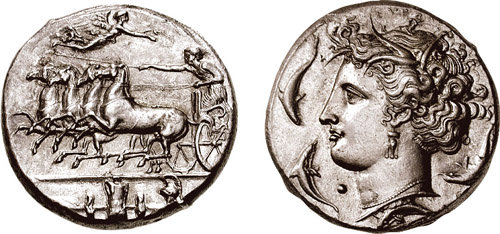 |
Ancient Greek coins are highly prized by collectors and historians alike for their beauty and historical significance. The Greeks began minting coins in the 6th century BC, with a variety of designs featuring images of gods, goddesses, and mythological creatures. These coins played a vital role in the Greek economy and were used for trade and commerce throughout the ancient world. Some of the most famous Greek coins are the Athenian owl, the Alexander the Great tetradrachm, and the Corinthian stater, all of which feature intricate designs and finely detailed engravings. Ancient Greek coins were made of various metals, including gold, silver, and bronze, and often included inscriptions in Greek. They were widely circulated throughout the ancient world, making them a fascinating artifact of Greek history that still holds great value today for collectors and historians. |
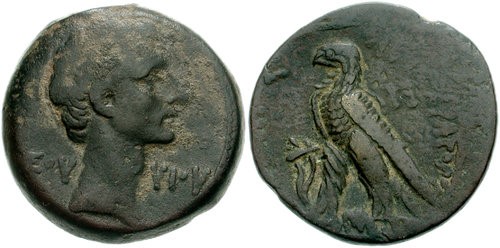 |
Ancient Egyptian coins are a rare and highly sought-after addition to any coin collection. The Egyptians began minting coins in the 3rd century BC, with a variety of designs featuring images of gods, goddesses, and pharaohs. However, these coins were not widely used in commerce, as the ancient Egyptians primarily relied on a barter system for trade. The most famous of these coins is the gold octodrachm of Ptolemy III, which features a portrait of the pharaoh wearing a crown on the obverse side and an eagle on the reverse side. Other ancient Egyptian coins were made of various metals, including silver and bronze, and often included inscriptions in hieroglyphics. While ancient Egyptian coins are scarce, they offer a fascinating glimpse into the history and culture of one of the world's most ancient civilizations, making them highly prized by collectors and historians alike. |
European Coins Since the 1700's |
|
 |
Belgian Franc gold coins are a rare and historic addition to any coin collection. These coins were first minted in 1832, following the independence of Belgium from the Netherlands, and were widely used in commerce and trade until the introduction of the euro in 2002. The most famous of these coins is the 20 franc gold coin, which features the bust of King Leopold II on the obverse side and the Belgian coat of arms on the reverse side. Other denominations were also produced, including the 10 franc, 50 franc, and 100 franc gold coins, which feature different designs and images of notable Belgians. The coins are made of 90% gold and 10% copper, with a weight of 6.45 grams for the 20 franc coin and a diameter of 21 mm. Belgian Franc gold coins are highly valued by collectors for their rarity, historic significance, and intrinsic value as gold bullion. |
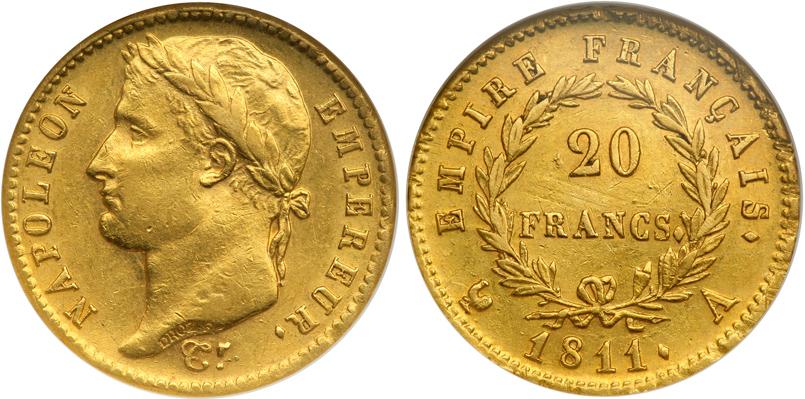 |
French Franc gold coins are a valuable and historical addition to any coin collection. These coins were first minted in 1360 and were widely used in commerce and trade until the introduction of the euro in 2002. The most famous of these coins is the 20 franc gold coin, also known as the Napoleon, which features an image of Napoleon Bonaparte on the obverse side and the French coat of arms on the reverse side. Other denominations were also produced, including the 10 franc, 50 franc, and 100 franc gold coins, which feature different designs and images of notable French figures. The coins are made of 90% gold and 10% copper, with a weight of 6.45 grams for the 20 franc coin and a diameter of 21 mm. French Franc gold coins are highly prized by collectors for their historic significance, rarity, and intrinsic value as gold bullion. They offer a fascinating glimpse into the history and culture of France, making them a must-have for any serious coin collector. |
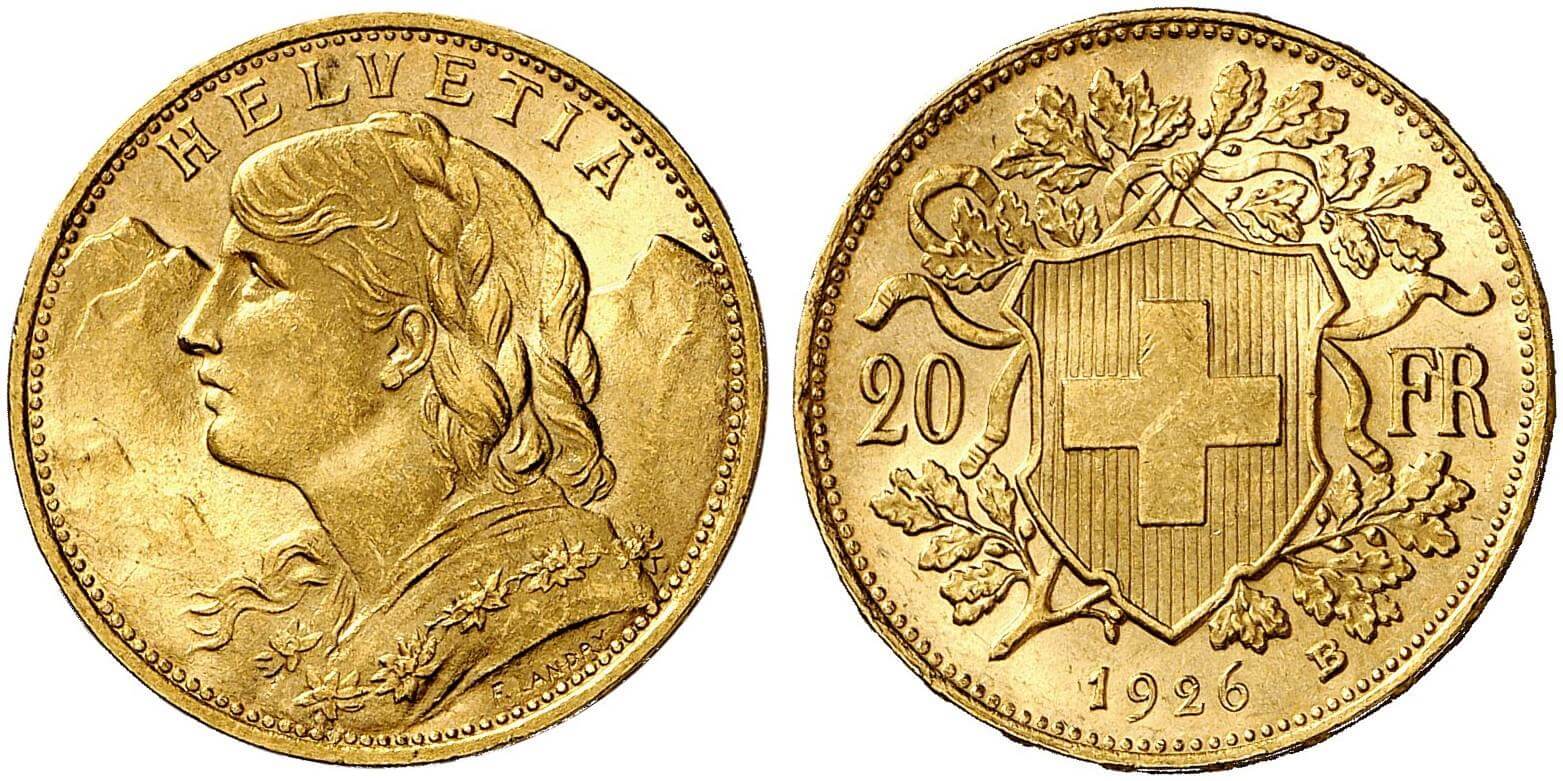 |
Swiss Vreneli gold coins are a beautiful and popular addition to any coin collection. These coins were first minted in 1897 and feature the image of a traditional Swiss woman, known as "Vreneli," on the obverse side and the Swiss coat of arms on the reverse side. The coins were named after Vreneli, a common name given to young Swiss women, and were widely used in commerce and trade until the introduction of the Swiss franc in 2000. The most common denomination is the 20 franc Vreneli, which is made of 90% gold and 10% copper, with a weight of 6.45 grams and a diameter of 21 mm. Other denominations were also produced, including the 10 franc and 100 franc gold coins, which feature different designs and images of notable Swiss figures. Swiss Vreneli gold coins are highly valued by collectors for their beauty, historic significance, and intrinsic value as gold bullion. They offer a fascinating insight into Swiss culture and history, making them a must-have for any serious coin collector. |
 |
Greek Drachma gold coins are a fascinating and rare addition to any coin collection. The drachma was the currency of ancient Greece, and the first drachma coins were minted in the 6th century BC. The most famous of these coins is the Athenian owl, which features an image of the goddess Athena on the obverse side and an owl on the reverse side. Other drachma coins feature images of various gods, goddesses, and mythological creatures, as well as notable historical figures such as Alexander the Great. The coins were made of various metals, including gold, silver, and bronze, and often included inscriptions in Greek. Greek Drachma gold coins are highly prized by collectors for their rarity, historic significance, and intrinsic value as gold bullion. They offer a fascinating glimpse into the history and culture of ancient Greece, making them a must-have for any serious coin collector. |
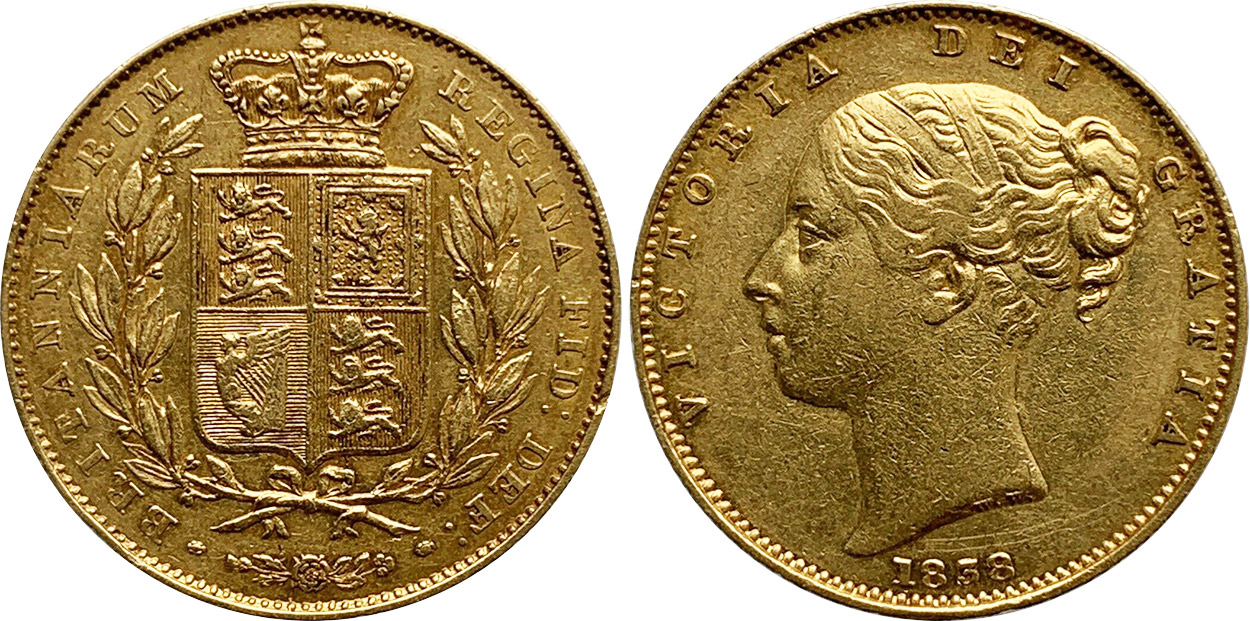 |
British Sovereign gold coins are a classic and historic addition to any coin collection. These coins were first minted in 1817 and feature a portrait of the reigning British monarch on the obverse side and an image of St. George slaying a dragon on the reverse side. The coins are made of 22-carat gold, with a weight of 7.98 grams and a diameter of 22 mm. The Sovereign has a rich history and has been used in commerce and trade for over two centuries. It was used in circulation in Britain and throughout the British Empire, and also became a popular investment vehicle for individuals looking to hold physical gold. The most famous of these coins is the 1910 King Edward VII Sovereign, which is highly sought after by collectors. British Sovereign gold coins continue to be produced by the Royal Mint today and are highly valued by collectors and investors for their historic significance and intrinsic value as gold bullion. |
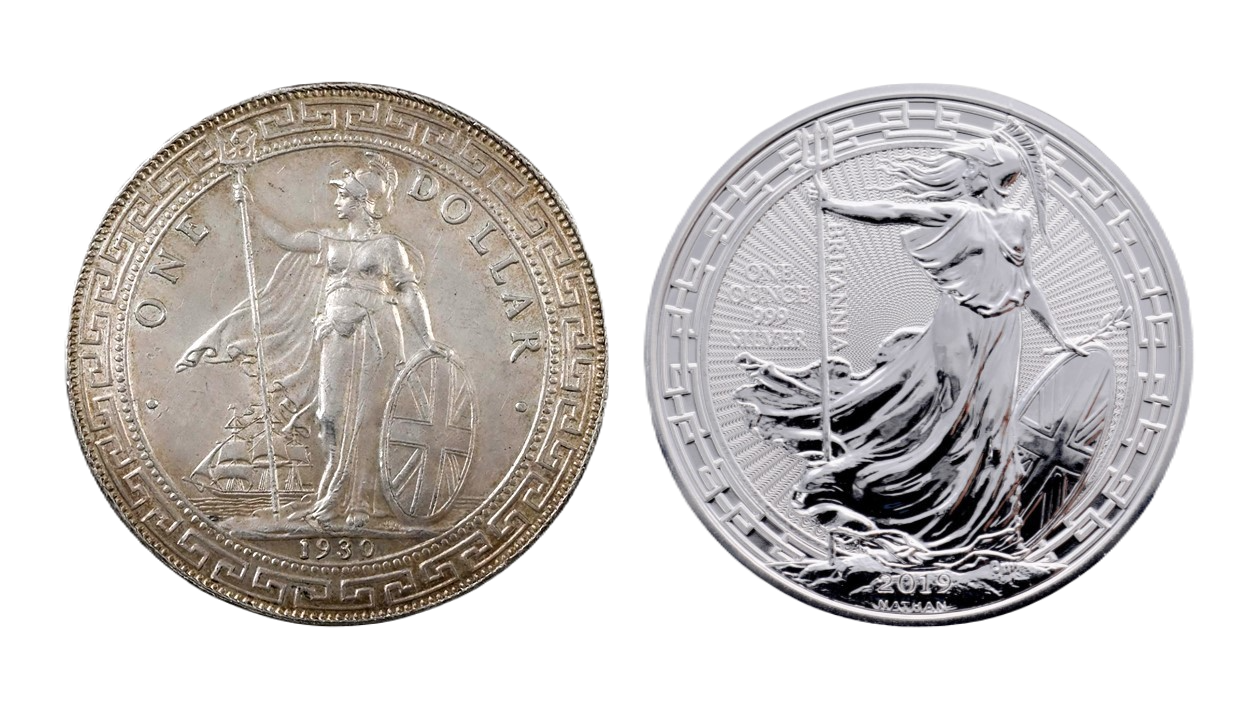 |
Coins featuring Lady Britannia are a classic and iconic addition to any coin collection. Britannia is a personification of Great Britain, often depicted as a strong and powerful female figure wearing a Corinthian helmet, holding a trident and a shield, and seated or standing on the seashore. Britannia has been featured on British coins since the Roman era, and the first modern Britannia coins were minted in 1672 during the reign of King Charles II. The most famous of these coins is the British Gold Britannia, which features the image of Lady Britannia on the obverse side and the image of Queen Elizabeth II on the reverse side. The coins are made of 24-carat gold, with a weight of one ounce and a diameter of 32.69 mm. The Gold Britannia has been produced annually by the Royal Mint since 1987 and has become a popular investment vehicle for those looking to hold physical gold. Other coins featuring Lady Britannia include the British Silver Britannia and the British Copper Britannia. Coins featuring Lady Britannia are highly valued by collectors and investors for their historic significance and intrinsic value as precious metal bullion. |
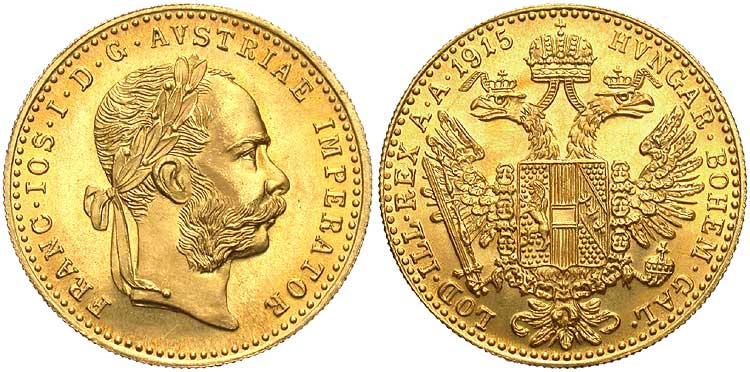 |
Austro-Hungarian Gold Ducats are a fascinating and historical addition to any coin collection. These coins were first minted in 1612 and were widely used in commerce and trade throughout the Austro-Hungarian Empire until its dissolution in 1918. The coins feature the portrait of the reigning emperor on the obverse side and an image of St. George slaying a dragon on the reverse side. The coins are made of 23-carat gold, with a weight of 3.49 grams and a diameter of 20 mm. The most famous of these coins is the Franz Joseph Gold Ducat, which was minted for over 60 years and features the portrait of Emperor Franz Joseph I on the obverse side. Other denominations were also produced, including the 4 ducat and 10 ducat gold coins, which feature different designs and images of notable Austro-Hungarian figures. Austro-Hungarian Gold Ducats are highly valued by collectors for their rarity, historic significance, and intrinsic value as gold bullion. They offer a fascinating glimpse into the history and culture of the Austro-Hungarian Empire, making them a must-have for any serious coin collector. |
| World Coins | |
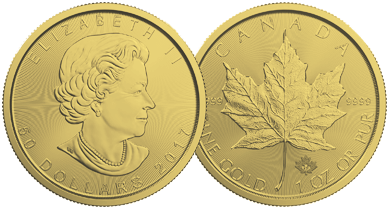 |
Canadian Maple Leaf coins are a popular and highly valued addition to any coin collection. The Maple Leaf gold coin was first minted in 1979 and features the image of a maple leaf on the obverse side and the image of Queen Elizabeth II on the reverse side. The coin is made of .9999 fine gold, with a weight of one ounce and a diameter of 30 mm. The Maple Leaf silver coin was first minted in 1988 and also features the image of a maple leaf on the obverse side and the image of Queen Elizabeth II on the reverse side. The silver coin is made of .9999 fine silver, with a weight of one ounce and a diameter of 38 mm. Both the gold and silver coins are produced annually by the Royal Canadian Mint and are highly valued by collectors and investors for their purity, beauty, and intrinsic value as precious metal bullion. The Maple Leaf coins are considered among the most secure bullion coins in the world, due to their unique security features, including micro-engraved radial lines and a laser-engraved maple leaf privy mark. The Canadian Maple Leaf coins are a must-have for any serious coin collector or precious metal investor. |
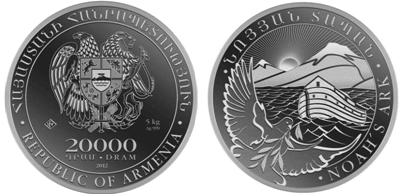 |
Armenian Noah's Ark coins are a unique and intriguing addition to any coin collection. These coins are minted by the Central Bank of Armenia and feature an image of Noah's Ark on the obverse side and the Armenian coat of arms on the reverse side. The image of Noah's Ark on the coin is based on the biblical story of the Great Flood, where Noah built an ark to save himself and his family from the flood waters. The coins are made of .999 fine silver and are available in various denominations, including one ounce, 5 ounces, 10 ounces, and one kilogram. The most popular of these coins is the one ounce silver coin, which has a diameter of 38.6 mm and a weight of 31.1 grams. Armenian Noah's Ark coins are highly valued by collectors for their unique design, religious significance, and intrinsic value as silver bullion. They offer a fascinating insight into the history and culture of Armenia and are a must-have for any serious coin collector. |
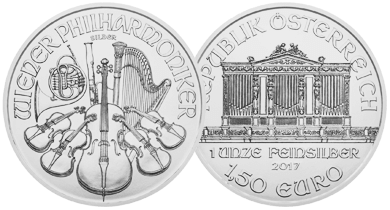 |
Austrian Philharmonics are a highly sought-after addition to any coin collection. These coins were first minted in 1989 and are produced by the Austrian Mint. The obverse side of the coin features the Great Organ in the Golden Hall of the Vienna Philharmonic Orchestra, while the reverse side features a variety of musical instruments, including the harp, violin, cello, flute, and French horn. The coins are made of .9999 fine gold, with a weight of one ounce and a diameter of 37 mm. Austrian Philharmonics are also produced in silver, with a weight of one ounce and a diameter of 37 mm. The coins are legal tender in Austria and are highly valued by collectors and investors for their beauty, purity, and intrinsic value as precious metal bullion. The Austrian Philharmonics are considered among the most beautiful bullion coins in the world and have won numerous awards for their design and quality. They are a must-have for any serious coin collector or precious metal investor. |
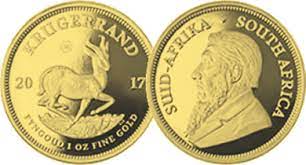 |
Krugerrands are a classic and highly recognized addition to any coin collection. These coins were first minted in 1967 by the South African Mint and feature the image of Paul Kruger, a former president of South Africa, on the obverse side and an image of a springbok antelope on the reverse side. Krugerrands are made of 22-carat gold, with a weight of one ounce and a diameter of 32.6 mm. The coins were created to promote the South African gold mining industry and quickly became popular with investors around the world due to their low premiums over spot gold prices. Krugerrands have been used as a vehicle for private investment in gold and are one of the most widely traded gold coins in the world. They are highly valued by collectors and investors for their beauty, historical significance, and intrinsic value as gold bullion. Krugerrands offer a fascinating glimpse into the history and culture of South Africa and are a must-have for any serious coin collector or precious metal investor. |